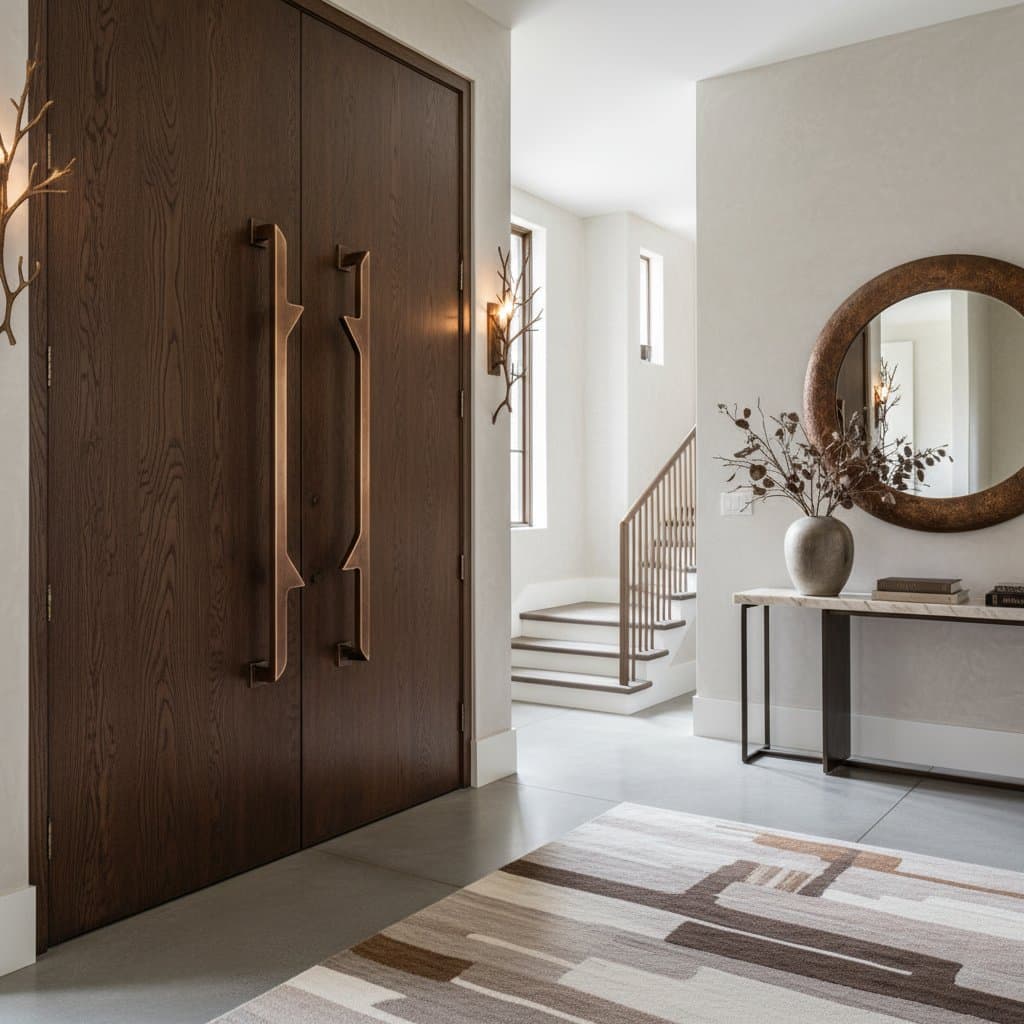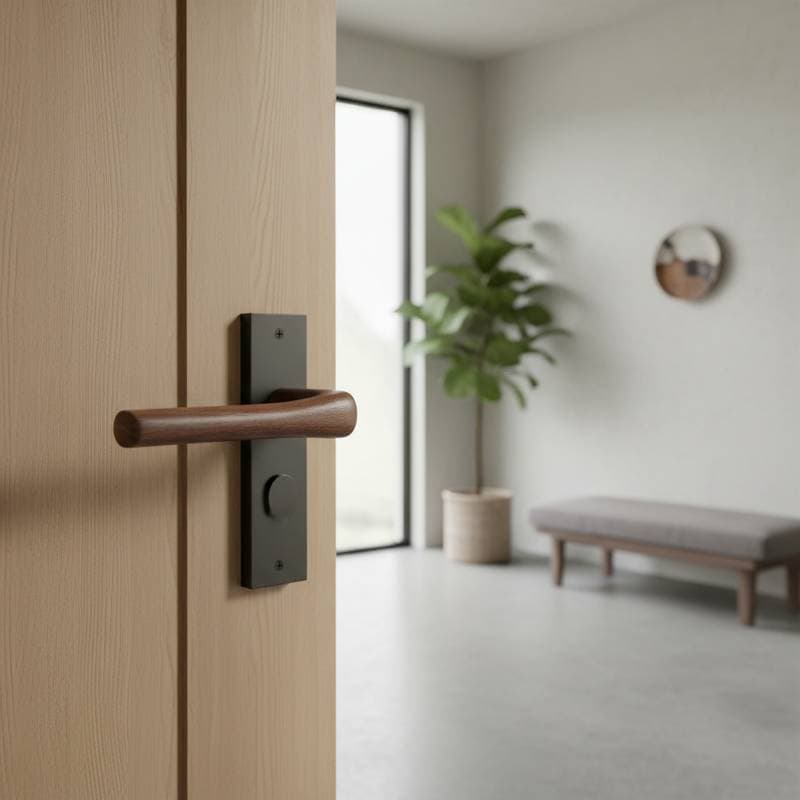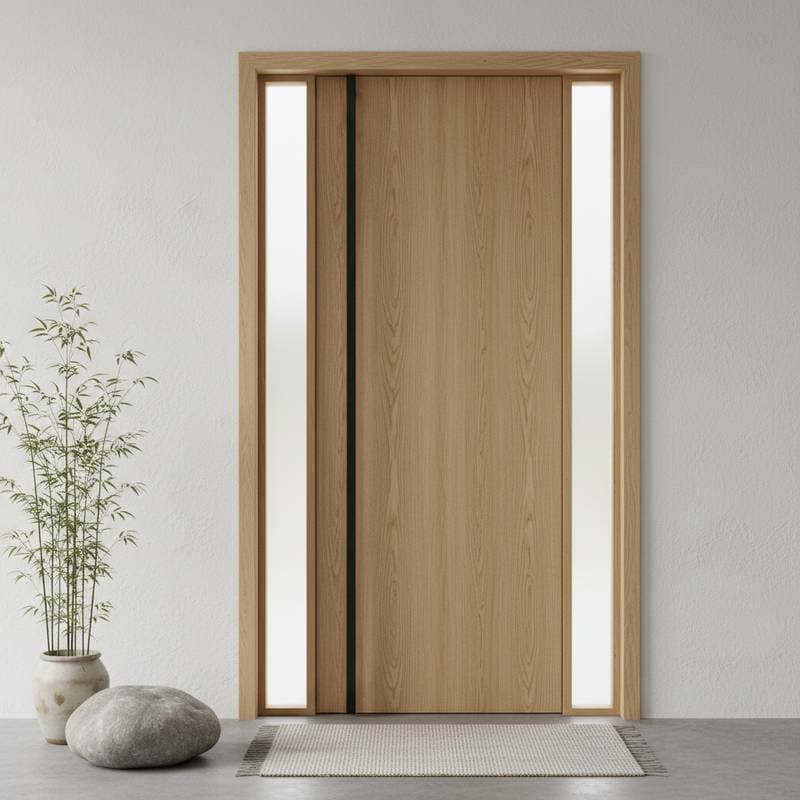Why Pocket Doors Are Surging Fivefold in 2025 Home Builds
Pocket doors experience a significant revival in contemporary home design. Previously associated with compact apartments or older architecture, these features now appear prominently in new constructions and renovations. This growth stems from their capacity to address practical design issues. They conserve space, enable adaptable arrangements, and promote sleek lines that align with homeowner preferences. As open-plan layouts shift toward versatile environments, pocket doors provide an effective and elegant solution.
The Appeal of Hidden Functionality
A primary advantage of pocket doors lies in their capacity to vanish into the wall when open. This design eliminates the need for clearance space required by traditional swinging doors. In confined areas, such space recovery proves invaluable. In expansive residences, pocket doors preserve clear views while offering privacy on demand. Professionals in architecture and interior design value this integration of aesthetics and utility. The style complements diverse settings, ranging from sleek modern dwellings to inviting transitional interiors.
The Minimalist Modern Trend: Seamless Transitions and Enhanced Light
Contemporary aesthetics emphasize unobstructed areas bathed in natural illumination. Pocket doors align perfectly with this preference by eliminating visual obstructions. Rather than doors that pivot and disrupt continuity, they retract smoothly to expose uniform flooring and wall treatments. Numerous homeowners select floor-to-ceiling pocket doors to accentuate height and foster openness in smaller rooms. Options like glass panels or light-toned wood contribute to a luminous, expansive atmosphere.
Three Approaches to Achieve This Aesthetic
Budget-Friendly Option ($400 - $900)
- Select hollow-core pocket door kits featuring a basic painted surface.
- Employ standard track systems compatible with conventional wall structures.
- Allocate resources toward enhanced handles or pulls to elevate the overall refinement.
Mid-Range Option ($1,000 - $2,500)
- Opt for solid-core doors to improve noise isolation and longevity.
- Incorporate soft-close and soft-open features for smoother daily operation.
- Apply natural wood veneers or painted surfaces that harmonize with surrounding trim.
Premium Option ($3,000 - $6,000)
- Explore custom pocket systems with hidden tracks and flush surrounds.
- Integrate glass or hybrid material panels to infuse architectural interest.
- Choose high-end hardware in finishes such as brushed brass, matte black, or stainless steel for durability and visual appeal.
Material and Finish Recommendations
- Doors: Favored options encompass white oak, walnut, and painted MDF in subdued hues like clay, greige, or warm white. Frosted glass or reeded elements introduce texture while preserving seclusion.
- Hardware: Subtle recessed or edge pulls in matte black or satin brass serve as contemporary highlights. Flush-mounted hardware maintains an unbroken door surface.
- Trim: Frameless installations remove visible casing entirely, whereas traditional spaces benefit from narrow trim profiles that mirror window and baseboard elements.
- Wall Treatments: Opt for smooth drywall or understated plaster to ensure visual continuity. For added interest, incorporate wood slats or paneling that extends across the pocket recess.
The Transitional Revival: Merging Timeless Elements with Contemporary Comfort
Many homeowners prefer a balance between simplicity and inviting textures, rather than stark modernity. Transitional styles achieve this harmony, and pocket doors enhance it by providing versatility without diminishing elegance. These doors effectively partition areas like dining spaces from kitchens or offices from living rooms, while glass or wood inserts sustain visual links. The outcome blends heritage with innovation.
Three Approaches to Achieve This Aesthetic
Budget-Friendly Option ($600 - $1,200)
- Fit standard pocket kits with two-panel shaker-style doors painted to align with existing trim.
- Select straightforward brushed nickel pulls for understated elegance.
- Retain visible framing to coordinate with other entryways in the home.
Mid-Range Option ($1,500 - $3,000)
- Choose solid-core wood doors featuring raised panels or slim glass sections.
- Install advanced hardware including soft-close tracks and robust rollers.
- Coordinate finishes with adjacent cabinetry or window frames for unified appearance.
Premium Option ($3,500 - $7,000)
- Tailor pocket doors with ornamental molding or inlaid patterns.
- Incorporate artisanal pulls in antique brass or oil-rubbed bronze.
- Utilize paired pocket doors that converge centrally for grand entrances or wide passages.
Material and Finish Recommendations
- Doors: Painted wood in gentle shades of gray, cream, or navy imparts sophistication and layers. Stained cherry or walnut delivers warmth in more classic environments.
- Hardware: Timeless options like polished nickel or antique brass pair enduring appeal with reliable function.
- Trim and Casing: Preserve balanced casing around the pocket frame to uphold architectural harmony.
- Glass Options: Divided clear panes or frosted motifs offer seclusion alongside light transmission.
The Space-Saving Contemporary: Utility Integrated into Daily Life
In urban settings and compact dwellings, maximizing area ranks as a key concern. Pocket doors excel in these contexts by liberating essential space in utility rooms, bathrooms, and modest bedrooms. Designers often combine them with integrated storage and wall fixtures to cultivate a streamlined yet functional layout. This approach embraces multipurpose design without an overly stark feel.
Three Approaches to Achieve This Aesthetic
Budget-Friendly Option ($300 - $800)
- Install a basic hollow-core pocket door with a painted exterior.
- Use ready-to-assemble kits equipped with essential tracks suited to standard 2x4 walls.
- Paint the door to match wall colors, allowing it to blend seamlessly.
Mid-Range Option ($900 - $2,000)
- Advance to a solid-core flush door for superior soundproofing.
- Explore mirrored or laminated surfaces to bounce light and amplify perceived room size.
- Include soft-close mechanisms for effortless handling.
Premium Option ($2,500 - $5,500)
- Select glass or metal-framed doors reminiscent of industrial lofts.
- Employ concealed track setups and invisible jambs for a fluid look.
- Add embedded lighting or smart controls for enhanced connectivity.
Material and Finish Recommendations
- Doors: Neutral shades such as sand, graphite, or white oak establish a serene, up-to-date scheme. Matte textures appear polished and minimize smudges.
- Hardware: Discreet handles in black or stainless steel complement sparse designs.
- Wall Systems: Reinforce framing to support substantial doors or glass elements.
- Flooring Continuity: Extend flooring under the track to sustain room-to-room flow.
Essential Maintenance Practices
Pocket doors demand minimal surface care compared to hinged varieties, as they remain shielded within the wall. Correct installation remains crucial, however. Faulty framing or offset tracks may result in binding or noise. Keep the wall cavity clear of obstructions and lubricate rollers at regular intervals. Clean solid wood or veneer surfaces with mild soap and water as needed. Steer clear of abrasive cleaners that might damage finishes or cause warping. For glass components, use gentle, scratch-free solutions. With proper setup, these doors endure for years with little intervention.
Common Pitfalls to Sidestep
- Overlooking Wall Dimensions: Not all pocket systems suit standard wall depths. Confirm framing specifications prior to purchase.
- Compromising on Hardware Quality: Inferior rollers and tracks produce noise and degrade quickly. Investing in superior components prevents ongoing issues.
- Disregarding Noise Management: Hollow-core models provide limited sound barriers. For private areas like bedrooms or studies, select solid-core or insulated variants.
- Permitting Misalignment: Ensure doors hang perfectly vertical. Even slight deviations lead to jamming and irregular sealing.
- Ignoring Service Accessibility: Design for removable access panels or reachable tracks to facilitate future repairs.
Harmonizing Colors and Finishes
Integrate pocket doors into the overall palette for design cohesion. Neutrals dominate, yet thoughtful contrasts inject character. Sample pairings include:
- Warm Minimalism: White oak door paired with ivory walls, black hardware, and soft gray trim.
- Classic Contrast: Navy or charcoal door against crisp white walls with polished nickel accents.
- Natural Blend: Sand-toned door with beige walls and bronze or iron details for added depth.
- Light and Airy: Pale wood door, white walls, frosted glass insert, and matte black pull.
- Urban Edge: Matte graphite door, concrete-inspired wall treatment, and stainless trim.
Integrating Pocket Doors for Lasting Impact
Pocket doors transform homes by combining practicality with refined style across modern, transitional, and contemporary contexts. Homeowners gain flexible spaces that adapt to evolving needs, from daily routines to entertaining guests. By selecting appropriate materials, hardware, and installation methods, these features enhance both functionality and visual appeal. Consider consulting professionals to tailor installations to specific layouts, ensuring long-term satisfaction and value in 2025 builds.






